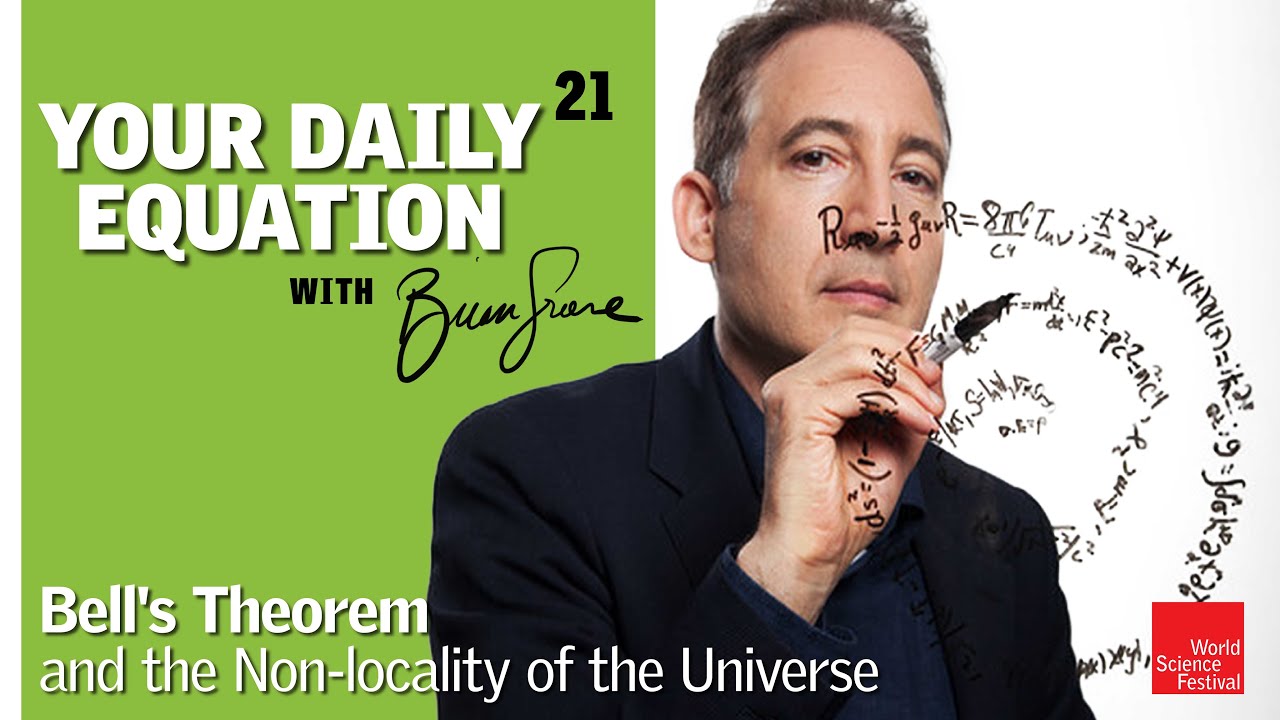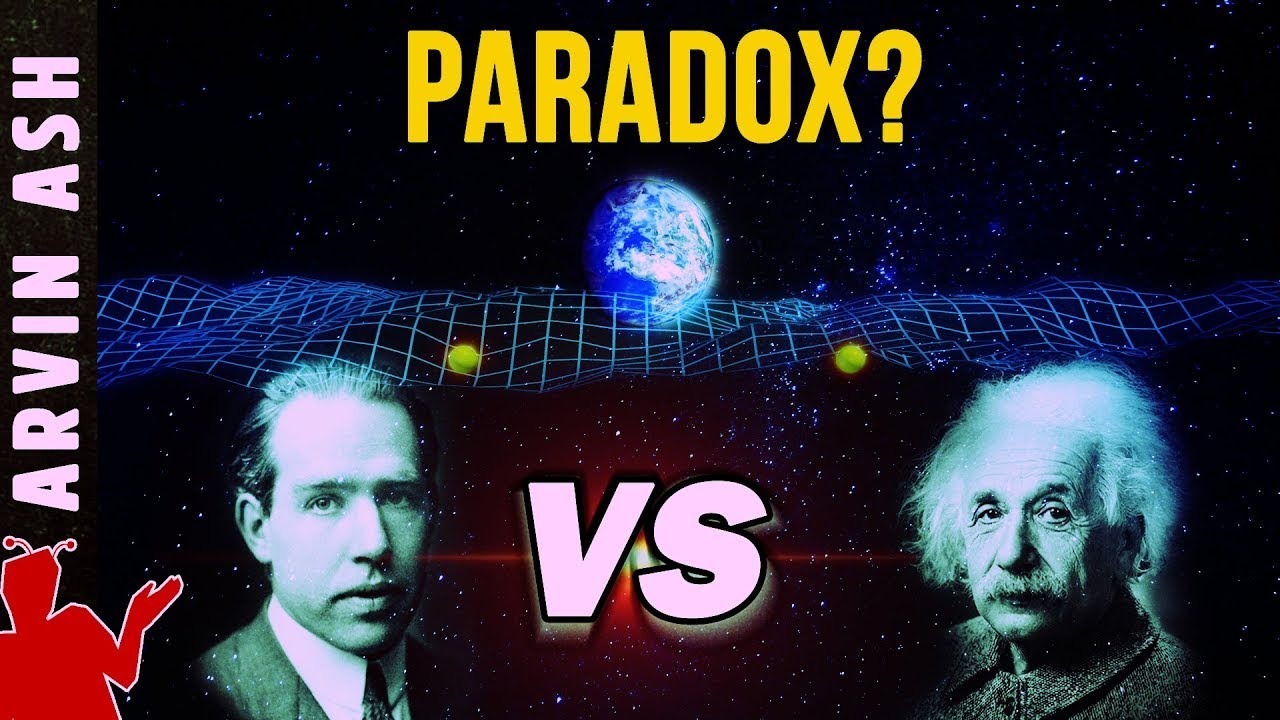Professor Sandu Popescu - Quantum non-locality and beyond
TLDRIn this engaging talk, Professor Santo Popescu discusses the intriguing concept of quantum non-locality, exploring its historical roots in Einstein's skepticism of quantum mechanics. He delves into the EPR paradox and the role of local hidden variables, leading to the revelation of non-local correlations that challenge our classical understanding of physics. Popescu also touches on the implications of quantum information and computation, highlighting the ongoing research and technological advancements in the field, as well as the foundational questions that remain about the nature of quantum mechanics and its relationship with quantum field theory.
Takeaways
- 🌌 Quantum non-locality challenges our classical understanding of physics, as it implies that particles can instantaneously affect each other regardless of distance.
- 👤 Professor Santo Popescu, a pioneer in quantum information, discusses the foundational aspects of quantum mechanics and its implications.
- 🔬 The script is based on a talk that explores the history and current understanding of quantum non-locality, starting from Einstein's discomfort with quantum mechanics.
- 🎲 Einstein, Podolsky, and Rosen (EPR) proposed a thought experiment suggesting that quantum mechanics is incomplete due to the existence of local hidden variables.
- 🤔 John Bell later refuted the EPR argument by demonstrating that no local hidden variables could account for all the predictions of quantum mechanics.
- 💡 Non-locality implies that quantum mechanics is fundamentally probabilistic, which allows for particles to 'communicate' faster than light without violating relativity.
- 🧠 The concept of non-locality and its compatibility with relativity has been a significant area of research and has implications for quantum information and computation.
- 🔍 Current research in quantum information spans from foundational questions about quantum mechanics to technological advancements in quantum computing and cryptography.
- 🚀 Major tech companies are investing in quantum information, recognizing its potential to revolutionize computation and information processing.
- 🤝 The dialogue between different interpretations of quantum mechanics, such as the epistemic view of the wave function, stimulates important discussions and sharpens our understanding of the field.
- 🌟 Quantum mechanics is not just about microscopic particles; it reveals deeper aspects of the universe that are still not fully understood and continue to inspire new research.
Q & A
What is the main topic of Professor Popescu's talk?
-The main topic of Professor Popescu's talk is quantum non-locality.
Why did Einstein have issues with quantum mechanics?
-Einstein had issues with quantum mechanics because he believed that it was incomplete and did not like the probabilistic nature of the theory, famously stating that 'God doesn't play dice'.
What is the EPR paradox?
-The EPR paradox, introduced by Einstein, Podolsky, and Rosen, is a thought experiment that aimed to demonstrate the incompleteness of quantum mechanics by showing that it allows for 'spooky action at a distance', suggesting the existence of local hidden variables.
What did John Bell's work contradict about the EPR paradox?
-John Bell's work contradicted the EPR paradox by showing that local hidden variables were not necessary to explain quantum phenomena, and that quantum mechanics is inherently non-local.
How does quantum non-locality challenge our classical understanding of communication?
-Quantum non-locality challenges our classical understanding of communication because it implies that quantum particles can be instantaneously correlated regardless of the distance between them, seemingly violating the speed of light limit set by relativity.
What is the significance of the no-go theorem for local hidden variables?
-The no-go theorem for local hidden variables, as demonstrated by John Bell, signifies that any theory incorporating local realism cannot reproduce all the predictions of quantum mechanics, thus supporting the non-local nature of quantum mechanics.
What does the concept of non-locality imply about the nature of reality?
-The concept of non-locality implies that the nature of reality at the quantum level is fundamentally different from our everyday experiences, exhibiting correlations between distant particles that cannot be explained by local interactions alone.
How does quantum non-locality relate to the concept of entanglement?
-Quantum non-locality is closely related to the concept of entanglement, as entangled particles exhibit correlations that cannot be explained by local hidden variables, indicating a non-local connection between them.
What is the role of non-determinism in quantum mechanics?
-Non-determinism is a fundamental aspect of quantum mechanics, meaning that the outcomes of measurements on quantum systems are probabilistic and cannot be predicted with certainty, contributing to the non-local correlations observed in quantum phenomena.
What are some of the technological challenges in developing quantum computers?
-Some of the technological challenges in developing quantum computers include achieving precise control over quantum states, maintaining coherence of quantum states, and scaling up the number of qubits while minimizing errors and decoherence.
What is the current state of research in quantum information?
-The current state of research in quantum information is highly active, with advancements in both theoretical understanding and practical applications. Researchers are exploring the foundations of quantum mechanics, developing new technologies for quantum computing and communication, and creating algorithms to solve problems that are intractable for classical computers.
Outlines
🎓 Introduction to Quantum Non-Locality
The video begins with an introduction to Professor Santo Popescu, a physicist specializing in quantum information, who is giving a talk on quantum non-locality. The professor starts by discussing Einstein's discomfort with quantum mechanics, particularly his famous quote about God not playing dice. The discussion leads to an exploration of the photoelectric effect and Einstein's struggle to reconcile quantum mechanics with his own theories.
🧠 Einstein's Critique and the EPR Paradox
The talk delves into Einstein's critique of quantum mechanics, highlighting his belief that the theory was incomplete. This leads to the introduction of the EPR paradox, a thought experiment proposed by Einstein, Podolsky, and Rosen to demonstrate the incompleteness of quantum mechanics. The paradox revolves around the concept of local hidden variables and the idea that particles could instantaneously affect each other's states regardless of distance, challenging the principles of relativity.
🔄 The EPR Paradox and Hidden Variables
Professor Popescu explains the EPR paradox in more detail, describing the setup where two particles are sent in opposite directions and their states are measured. The paradox suggests that particles seem to 'know' how to correlate their states instantly, leading to the hypothesis of local hidden variables. This idea was initially proposed as a way to reconcile the apparent randomness of quantum mechanics with the deterministic nature of classical physics.
🌌 Bell's Theorem and Non-Locality
The discussion shifts to John Bell's work, who refuted the idea of local hidden variables and introduced the concept of non-locality. Bell's theorem showed that the correlations predicted by quantum mechanics could not be explained by local hidden variables alone. Instead, it suggested that particles could be entangled in such a way that the state of one instantaneously influences the state of the other, regardless of the distance between them.
🔮 Quantum Mechanics and the Limits of Non-Locality
The talk explores the implications of Bell's theorem and the limits of non-locality within quantum mechanics. It is shown that while quantum mechanics allows for non-local correlations, it does not permit superluminal communication. The professor discusses the idea that quantum mechanics is non-local but not maximally non-local, and raises the question of whether there could be a theory that is both non-local and non-deterministic without violating relativity.
🤔 The Search for New Quantum Axioms
The professor discusses the ongoing search for new axioms that could better explain quantum mechanics and its non-local properties. He emphasizes the need for creativity and open-mindedness in exploring these foundational aspects of quantum theory. The conversation also touches on the potential for quantum mechanics to reveal more about the nature of our universe and its underlying principles.
💡 Quantum Information and Current Research
The talk concludes with a look at current research in quantum information, covering both theoretical and technological advancements. The professor highlights the growing interest from major tech companies and the broad range of applications being explored for quantum computing. He also discusses the challenges in understanding quantum mechanics more deeply and the potential for future discoveries in the field.
🌟 Final Thoughts and Q&A
The session ends with a brief Q&A segment where the professor addresses questions about the relationship between quantum mechanics and quantum field theory, the potential epistemic nature of the wave function, and the current difficulties in understanding the limits of quantum non-locality. The professor emphasizes the value of continued exploration and debate in advancing our understanding of quantum mechanics.
Mindmap
Keywords
💡Quantum Non-Locality
💡Einstein-Podolsky-Rosen (EPR) Paradox
💡Hidden Variables
💡John Bell
💡Quantum Information
💡Quantum Computing
💡Entanglement
💡Quantum Cryptography
💡Relativity
💡Probability
💡Quantum Foundations
Highlights
Professor Santo Popescu, a pioneer in quantum information, discusses quantum non-locality.
The talk begins with a historical context, mentioning Einstein's discomfort with quantum mechanics despite his contributions to its foundation.
Einstein's famous quote, 'God doesn't play dice', is referenced to illustrate his dissatisfaction with the probabilistic nature of quantum mechanics.
The concept of quantum non-locality is introduced, challenging the idea that particles can have instantaneous correlations regardless of distance.
The EPR paradox, proposed by Einstein, Podolsky, and Rosen, is explained as an attempt to show quantum mechanics is incomplete due to the existence of local hidden variables.
John Bell's work is mentioned, which refuted the local hidden variable theory and established non-locality as a fundamental aspect of quantum mechanics.
The talk delves into the implications of non-locality for the theory of relativity, suggesting that quantum mechanics and relativity can coexist peacefully.
The potential for stronger correlations beyond quantum mechanics without violating relativity is explored, hinting at undiscovered aspects of nature.
A thought experiment involving Alice and Bob's communication using entangled particles is presented to illustrate the power of quantum non-locality.
The current state of quantum information research is discussed, highlighting the technological advancements and theoretical developments over the past 30 years.
The foundational questions of quantum mechanics are emphasized as an important area of ongoing research, aiming to deepen our understanding of non-locality and other quantum effects.
The practical applications of quantum mechanics, such as in quantum computing and cryptography, are mentioned as areas where significant progress has been made and continue to be developed.
The relationship between quantum mechanics and quantum field theory is touched upon, noting the latter's mathematical inconsistencies and ongoing efforts to reconcile them.
The discussion concludes with a reflection on the importance of imagination and creativity in exploring the unknown frontiers of quantum mechanics and its deeper implications.
Transcripts
Browse More Related Video

Your Daily Equation #21: Bell's Theorem and the Non-locality of the Universe

Einstein's Quantum Physics Theory That Proved Him Wrong | The Secrets Of Quantum Physics | Spark

The EPR Paradox & Bell's inequality explained simply

Why is quantum mechanics non-local? (I wish someone had told me this 20 years ago.)

Quantum Entanglement & Spooky Action at a Distance

What If We Live in a Superdeterministic Universe?
5.0 / 5 (0 votes)
Thanks for rating: